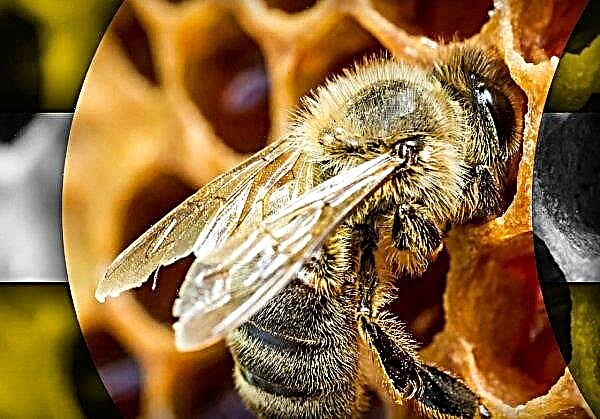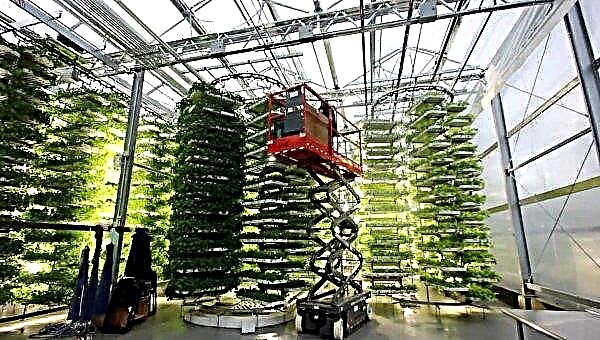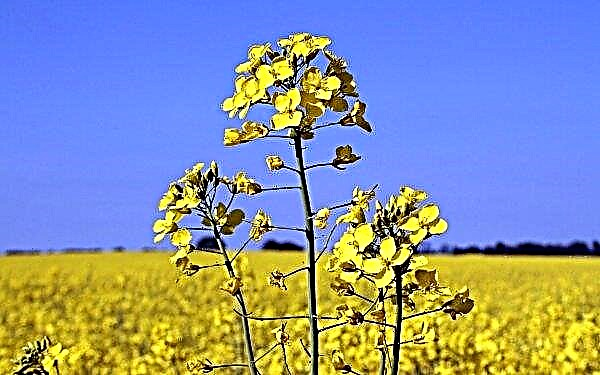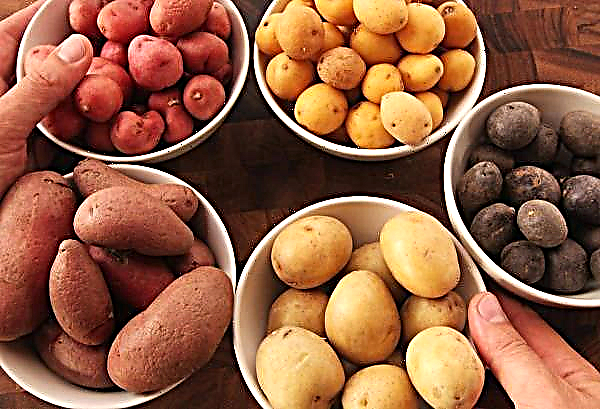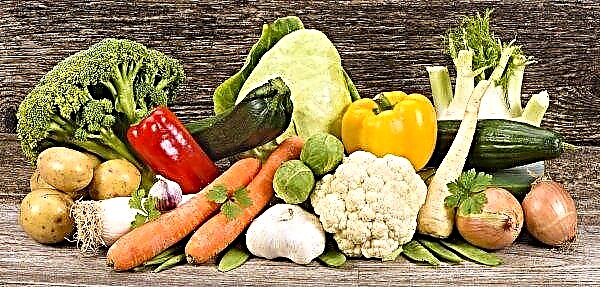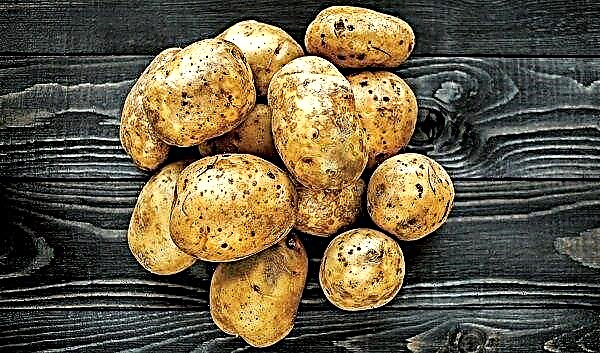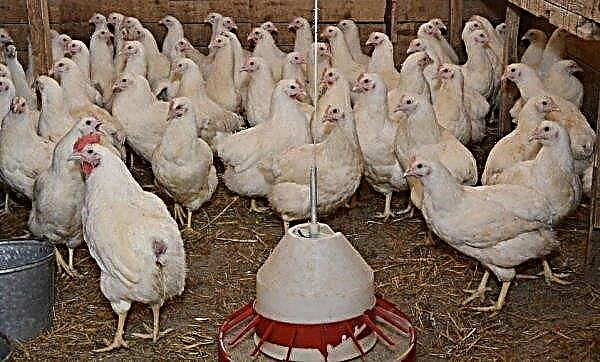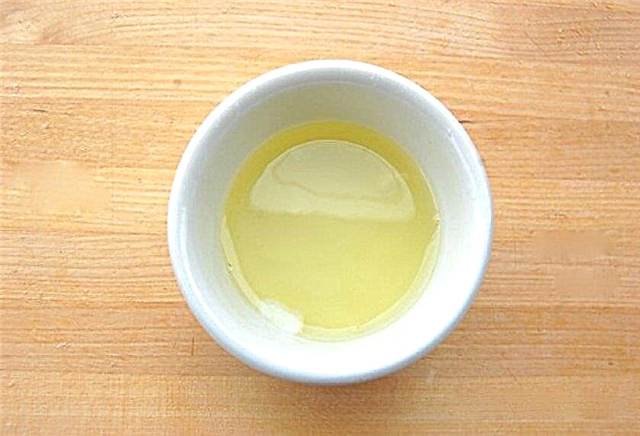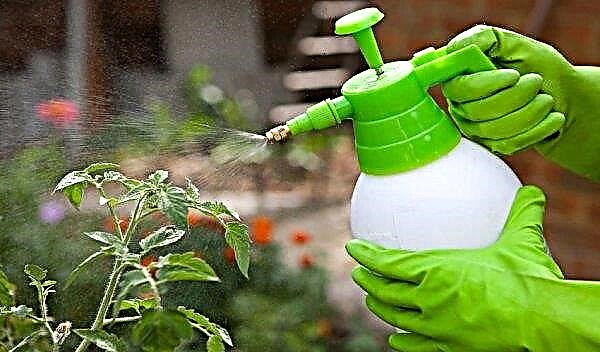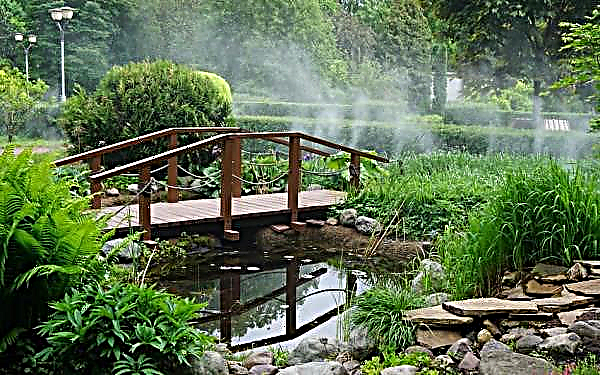Livestock breeding is one of the oldest ways of obtaining human food. For many centuries, cattle breeding has been carried out, when animal species are divided into dairy and meat. This article is about one of the most productive dairy breeds of cows - Dutch.
Breed description
The Dutch cow, as its name implies, comes from the Netherlands. The first descriptions are found back in the distant XVII century, so the purity of the breed is beyond doubt. These animals were used for crossbreeding in Russia, and many modern species were formed from them.
Did you know? The Dutch cow is extremely shy - in case of stress (from noise, obscure events, the intervention of a veterinarian), milk yield is significantly reduced and the animal loses its appetite. Stress in them arises even from content on a leash.
"Dutch" is divided into three types:
- Dutch (Frisian) - black and white;
- groningen - black or red with a white head;
- Maas Rhine-Izelskaya - red-motley.
 The most common are animals of the Frisian species.
The most common are animals of the Frisian species.External data
| Suit | Black-motley, red-motley, combined |
| Leather | Soft, delicate, elastic |
| Wool | Light edge |
| Head | Elongated, rough |
| Horns | Medium gray |
| Neck | Medium thin |
| Withers | Medium, up to 132 cm |
| Housing | Proportional, elongated |
| Chest | Medium (depth up to 70 cm, width up to 40 cm) |
| Back | Wide, slightly curved |
| Legs | Medium powerful |

Advantages and disadvantages
The positive qualities of the Dutch breed are as follows:
- pros
- milk production;
- fast weight gain;
- high meat yield;
- rapid puberty;
- adaptability to climatic conditions;
- skin quality.
Cons are also present:
- Minuses
- weak immunity - high susceptibility to serious viral diseases, such as tuberculosis, mastitis or leukemia;
- timidity and its serious effect on milk yield and weight gain;
- selectivity in nutrition.

To some extent, a cleanliness can also be considered a negative factor - pens for representatives of this species should be cleaned at least once a day (or two better). How much milk will be in milk yield depends on many factors. The most important of them, in which the individual gives the greatest amount of milk, is constant veterinary control, high-quality feeding and calm living conditions.
Maintenance and care
Keeping representatives of the Dutch breed is rather troublesome, as these animals are demanding on hygiene, nutrition and psychology.
Important! There should be no drafts in the barn, and the room itself must be equipped with a high-quality ventilation system.
Summer walking area
The traditional method of keeping in the summer is grazing animals in the meadow. Groups are made up of several dozen individuals and are controlled by a shepherd who collects pets in the morning and takes them home in the evening. With this grazing, the cows are calm and in good muscle tone. Separately, you need to make sure that the group does not get too busy with the retreating individual, which will negatively affect the rest of the rest of the herd. To protect from the scorching rays of the midday sun or a sudden summer rain, it is necessary to equip a canopy at the place of grazing, where the cows could relax in coolness or protect themselves from water flows.
With this grazing, the cows are calm and in good muscle tone. Separately, you need to make sure that the group does not get too busy with the retreating individual, which will negatively affect the rest of the rest of the herd. To protect from the scorching rays of the midday sun or a sudden summer rain, it is necessary to equip a canopy at the place of grazing, where the cows could relax in coolness or protect themselves from water flows.
Arrangement of a barn
The described species does not recognize the leash, therefore, it is necessary to organize a barn for this breed in the form of boxes. In such conditions, animals can safely move around the territory separated for them, eat, relax and milk.
It is necessary to divide the pets into groups according to their “social status” - young heifers, dairy, dry. The number of cows in the group is 20-40 goals. With a small number of animals, it is enough to separate pregnant individuals in the last stages. Newborn calves are also kept separately.
Feeding troughs and drinking bowls with this content will have to be set as a group. Given the frequency of blockage and the possibility of transmission of infection, this equipment must be cleaned after each feeding - 2-3 times a day. Straw flooring is laid daily. Given the high requirements of breed representatives for cleanliness, instead of litter, it makes sense to consider the possibility of acquiring special mats that can be washed and processed for reuse.
Straw flooring is laid daily. Given the high requirements of breed representatives for cleanliness, instead of litter, it makes sense to consider the possibility of acquiring special mats that can be washed and processed for reuse.
Important! In the troughs, both summer temporary and stationary in the barn, you need to add lick salt. This tool helps in the formation of bones, improves appetite and increases immunity in young animals.
Conditions of detention
“Hollandka” adapts to non-hot climatic conditions - tolerates short heat periods, feels good in moderate weather and normally experiences continental cold. The latter refers more to the Frisian species, which is brought up in a harsh climate and is ready to live in it.
The illumination of the barn should be comfortable - dim "Soviet" lighting is already in the past. Animals should not be oppressed by twilight, modern lamps can illuminate the room efficiently and inexpensively. We talked about ventilation above - it is extremely necessary, but should not create drafts. A little coolness even on hot days will set the cows in a positive way, and they will respond to good conditions with high milk yield.
We talked about ventilation above - it is extremely necessary, but should not create drafts. A little coolness even on hot days will set the cows in a positive way, and they will respond to good conditions with high milk yield.
Cleaning
The following daily operations are required:
- stall cleaning;
- litter replacement;
- cleaning feeders;
- drinking bowl washing;
- airing the barn.
Milking preparation
Given the susceptibility of animals to infectious diseases, before milking, it is necessary to carry out simple procedures:
- washing the udder and nipples;
- examination of the udder for neoplasms (prevention and early detection of mastitis).

What to feed
A variety of diets leads to a good state of the cows, which is clearly seen in high-quality milk yield. The issue of feeding should be given the closest attention.
Livestock pasture and feeding in the summer
When bringing livestock to spring pasture, it is necessary to spend some transitional period when the animal gradually gets used to fresh, juicy grass. This is done to rebuild the gastrointestinal tract from hard winter feed to delicate herbs.
Important! Mastitis is a common disease for dairy cows. The Dutch is no exception, even more so, it is predisposed to it. Therefore, constant monitoring for the timely detection of the disease is simply necessary.
The feed base can be varied, but you need to carefully monitor that meadow forbs does not contain unwanted plants that can cause digestive upset or poisoning. The grass of clover, lupine, alfalfa is perfectly absorbed. If the used pasture does not have these plants, they can be prepared in other places and added to the feeders in a mowed form.
Differences in winter feeding
The transition to stall feeding is also difficult for cows, who have been eating fresh food on pastures all the warm season. Here you need to carefully train your pets to roughage. In winter, the animal also needs minerals - the main one is magnesium.
Did you know? All the useful properties of potatoes are nullified by the fact that cows (especially young ones) get fat from it. This vegetable should be given extremely dosed or completely excluded from the diet.
An approximate transitional diet is as follows:
- roughage (hay, grain, bran, etc.) - 38%;
- juicy food (grass, sluggish grass, peeled vegetables) - 34%;
- concentrates (compound feed, mineral kits, oilcake) - 28%.

Water
In a wet meadow, animal drinking is not the most important aspect, eating grass, they quench their thirst and can calmly approach the drinkers to add the amount of liquid to the physiologically necessary.
In the barn, water supply is an extremely important issue, especially for dairy cows. The Dutch cow usually drinks 2-3 times a day, before each intake of water, it is necessary to pour out the old liquid and pour a new clean one.
The daily volume for dairy females is 70 liters, the so-called dead wood can be content with 50 liters. The temperature of the supplied water is maintained at about 16 ° C. The content of this wonderful breed is quite complex.
Such fastidious pets are best grown on large farms, where it is possible to create suitable conditions simultaneously for the whole livestock. In this case, the animals will thank for their care with their high milk yield.

